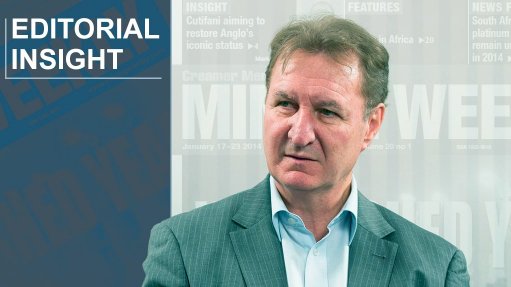
Brussels last week took ratified proposals to increase European Union (EU) nitrogen oxide (NOx) emission limits for new cars – and a UK airline said it was looking to using fuel cells to power aircraft taxiing on airport runways.
Both initiatives should be music to the ears of platinum mining companies keen on increasing demand for the platinum-group metals (PGMs) they mine.
According to Liberum mining analysts in London, the emissions limit will be lifted by 110% from 2017 to 2021 and then by another 50% thereafter, with the new testing requiring a major technology response.
On the cards is a platinum value shift.
Then, on the more peripheral end of the platinum-demand front, UK budget airline EasyJet announced a study aimed at using hydrogen fuel cells to power aircraft as they taxi on airport runways, a step that will not only eliminate emissions but also halve fuel costs.
EasyJet engineering head Ian Davies envisages the fuel cells being deployed to power an electric taxiing system, which a collaborative Honeywell-Safran study has found could lower fuel consumption by 51%.
Most experts agree that fuel cells, already used to power cars, buses, hospitals, clinics and schools, are technically ahead and have competitive operational costs, but require lower capital costs to take off properly.
Bringing them down the cost curve will ensure that their efficiency, versatility and scalability are allowed to play a major role in today’s emission-averse world that is searching for the clean and reliable power they bring.
On the new EU emissions testing regime, Liberum points out that from 2017/18, more accurate real driving emissions (RDE) procedures will be introduced to test for NOx and particulate matter.
Real NOx emissions are said by Liberum to be around 600 mg/km, which is seven-and-a-half times higher than the current Euro 6 limit, which provides new scope for catalyst washcoats that contain from 2g to 6g of PGMs.
Trade and Industry Minister Rob Davies last week announced backing for what appears to have the potential to lay an important new foundation for platinum offtake through the local manufacture of fuel cells within a special economic zone.
Many companies have been encouraging a wider spread use of fuel cells, including automotive giants.
Toyota, for instance, has released thousands of its fuel cell patents free of charge to speed up the technology’s adoption.
The Japanese vehicle giant has also begun selling its Mirai car, which uses a hydrogen fuel cell for power and emits only water vapour from its exhaust pipe.
The Mirai launch is said to form part of Toyota’s long-term strategy to eliminate all petrol and diesel engines from its output by 2050, which will be great for platinum demand.